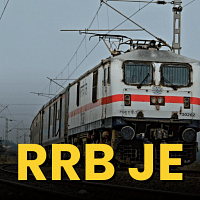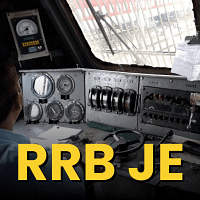Railways Exam > Railways Questions > While levelling in an undulating terrain, it...
Start Learning for Free
While levelling in an undulating terrain, it is preferable to set up the instrument on__
- a)top of the summit
- b)bottom of the valley
- c)one side of the slope
- d)A flat location
Correct answer is option 'B'. Can you explain this answer?
| FREE This question is part of | Download PDF Attempt this Test |
Verified Answer
While levelling in an undulating terrain, it is preferable to set up ...
Levelling is defined as the art of determining the relative height of different points on, above or below the surface.
View all questions of this test
Principle of Leveling:
1. Simple leveling:
It is the simplest operation in leveling when it is required to find the difference in elevation between two points both of which are visible from a single position of the level.
2. Differential leveling:
This method is used in order to find out the difference in elevation between two points.
If they too apart.
If the difference in elevation between them is too great.
In such cases, it is necessary to set up the level in several positions and work in various stages. The method of simple leveling is employed in each of the successive stages. The process is also known as compound continues leveling.
Most Upvoted Answer
While levelling in an undulating terrain, it is preferable to set up ...
Setting up the Instrument in Undulating Terrain
Undulating terrain refers to a type of terrain that has a series of hills and valleys. When levelling in an undulating terrain, it is important to set up the instrument in the correct location to achieve accurate results.
The correct answer to the question is option B, which means that it is preferable to set up the instrument at the bottom of the valley. This is because:
- Improved accuracy: Setting up the instrument at the bottom of the valley allows for a more accurate measurement of the elevation of the hill or mountain. This is because the instrument is closer to the base of the hill, which reduces the impact of any errors due to the slope of the terrain.
- Better stability: Setting up the instrument at the bottom of the valley provides better stability, as the ground is flatter and more level. This reduces the risk of the instrument being moved by wind or other external factors, which can cause errors in the measurement.
- Better visibility: Setting up the instrument at the bottom of the valley provides better visibility of the surrounding terrain, which makes it easier to identify any potential obstacles or other features that may affect the measurement.
In contrast, setting up the instrument at the top of the summit (option A) or on one side of the slope (option C) can result in lower accuracy and stability, as well as reduced visibility.
Conclusion
In conclusion, when levelling in an undulating terrain, it is preferable to set up the instrument at the bottom of the valley to achieve the best results. This provides improved accuracy, stability, and visibility, which are essential for accurate measurement of the elevation of the terrain.
Undulating terrain refers to a type of terrain that has a series of hills and valleys. When levelling in an undulating terrain, it is important to set up the instrument in the correct location to achieve accurate results.
The correct answer to the question is option B, which means that it is preferable to set up the instrument at the bottom of the valley. This is because:
- Improved accuracy: Setting up the instrument at the bottom of the valley allows for a more accurate measurement of the elevation of the hill or mountain. This is because the instrument is closer to the base of the hill, which reduces the impact of any errors due to the slope of the terrain.
- Better stability: Setting up the instrument at the bottom of the valley provides better stability, as the ground is flatter and more level. This reduces the risk of the instrument being moved by wind or other external factors, which can cause errors in the measurement.
- Better visibility: Setting up the instrument at the bottom of the valley provides better visibility of the surrounding terrain, which makes it easier to identify any potential obstacles or other features that may affect the measurement.
In contrast, setting up the instrument at the top of the summit (option A) or on one side of the slope (option C) can result in lower accuracy and stability, as well as reduced visibility.
Conclusion
In conclusion, when levelling in an undulating terrain, it is preferable to set up the instrument at the bottom of the valley to achieve the best results. This provides improved accuracy, stability, and visibility, which are essential for accurate measurement of the elevation of the terrain.
Attention Railways Students!
To make sure you are not studying endlessly, EduRev has designed Railways study material, with Structured Courses, Videos, & Test Series. Plus get personalized analysis, doubt solving and improvement plans to achieve a great score in Railways.

|
Explore Courses for Railways exam
|

|
Similar Railways Doubts
While levelling in an undulating terrain, it is preferable to set up the instrument on__a)top of the summitb)bottom of the valleyc)one side of the sloped)A flat locationCorrect answer is option 'B'. Can you explain this answer?
Question Description
While levelling in an undulating terrain, it is preferable to set up the instrument on__a)top of the summitb)bottom of the valleyc)one side of the sloped)A flat locationCorrect answer is option 'B'. Can you explain this answer? for Railways 2024 is part of Railways preparation. The Question and answers have been prepared according to the Railways exam syllabus. Information about While levelling in an undulating terrain, it is preferable to set up the instrument on__a)top of the summitb)bottom of the valleyc)one side of the sloped)A flat locationCorrect answer is option 'B'. Can you explain this answer? covers all topics & solutions for Railways 2024 Exam. Find important definitions, questions, meanings, examples, exercises and tests below for While levelling in an undulating terrain, it is preferable to set up the instrument on__a)top of the summitb)bottom of the valleyc)one side of the sloped)A flat locationCorrect answer is option 'B'. Can you explain this answer?.
While levelling in an undulating terrain, it is preferable to set up the instrument on__a)top of the summitb)bottom of the valleyc)one side of the sloped)A flat locationCorrect answer is option 'B'. Can you explain this answer? for Railways 2024 is part of Railways preparation. The Question and answers have been prepared according to the Railways exam syllabus. Information about While levelling in an undulating terrain, it is preferable to set up the instrument on__a)top of the summitb)bottom of the valleyc)one side of the sloped)A flat locationCorrect answer is option 'B'. Can you explain this answer? covers all topics & solutions for Railways 2024 Exam. Find important definitions, questions, meanings, examples, exercises and tests below for While levelling in an undulating terrain, it is preferable to set up the instrument on__a)top of the summitb)bottom of the valleyc)one side of the sloped)A flat locationCorrect answer is option 'B'. Can you explain this answer?.
Solutions for While levelling in an undulating terrain, it is preferable to set up the instrument on__a)top of the summitb)bottom of the valleyc)one side of the sloped)A flat locationCorrect answer is option 'B'. Can you explain this answer? in English & in Hindi are available as part of our courses for Railways.
Download more important topics, notes, lectures and mock test series for Railways Exam by signing up for free.
Here you can find the meaning of While levelling in an undulating terrain, it is preferable to set up the instrument on__a)top of the summitb)bottom of the valleyc)one side of the sloped)A flat locationCorrect answer is option 'B'. Can you explain this answer? defined & explained in the simplest way possible. Besides giving the explanation of
While levelling in an undulating terrain, it is preferable to set up the instrument on__a)top of the summitb)bottom of the valleyc)one side of the sloped)A flat locationCorrect answer is option 'B'. Can you explain this answer?, a detailed solution for While levelling in an undulating terrain, it is preferable to set up the instrument on__a)top of the summitb)bottom of the valleyc)one side of the sloped)A flat locationCorrect answer is option 'B'. Can you explain this answer? has been provided alongside types of While levelling in an undulating terrain, it is preferable to set up the instrument on__a)top of the summitb)bottom of the valleyc)one side of the sloped)A flat locationCorrect answer is option 'B'. Can you explain this answer? theory, EduRev gives you an
ample number of questions to practice While levelling in an undulating terrain, it is preferable to set up the instrument on__a)top of the summitb)bottom of the valleyc)one side of the sloped)A flat locationCorrect answer is option 'B'. Can you explain this answer? tests, examples and also practice Railways tests.

|
Explore Courses for Railways exam
|

|
Suggested Free Tests
Signup for Free!
Signup to see your scores go up within 7 days! Learn & Practice with 1000+ FREE Notes, Videos & Tests.
























